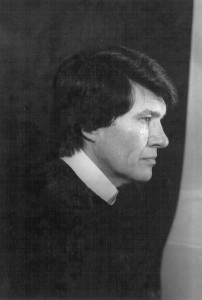
As I write this article, LSUA is nearing mid-semester. We lost some time due to our arctic encounters, and the students are working at full pace to catch up. My film photography class has explored some interesting techniques this semester in preparation for a student show near the end of term.
Film photography is a varied medium of creating fine art photographs in which the photographer stops a moment in time and captures the image—in all of the detail that the camera affords—for posterity. In a studio class, we are not limited to black and white and/or color film that is developed on paper by traditional means. We have the freedom to experiment with the image, to alter the image, and to provide a creative way of looking at that image.
Subject matter is a strong consideration for this class. Students are required to photograph various images to reflect subjects such as action, emotion, nature, animals, portrait and architecture. Evaluation is based on craftsmanship, balance, contrast and appropriateness of the image to the subject. The eye of the photographer is looking at the image with all of the mental and emotional aspects of his or her personality.
This spring, the class has explored various alternate techniques of photography. Students used cyanotype technique to create a type of blueprint. Chemicals are used to tint the photo paper a Prussian blue, similar to an architectural blueprint. Through the use of transparencies applied to the paper and exposure to light, a blue line print is produced.
After studying the techniques of Emmanuel Radnitsky (professionally known as Man Ray,) the students produced “rayographs”. This involves placing objects on sensitized paper that is then directly exposed to light. The result produces images of abstract or symbolic character.
Our show this spring will feature hand colored photographs. Hand coloring can utilize various types of color such as dyes, watercolors, oils, crayons and pastels. Watercolors are more permanent than dyes, but are less transparent. Oils produce a transparent and translucent surface because of burnishing, and can produce an impasto technique that produces a texture. Other tools such as the German Faber-Castell oil pencils require more advanced technique in drawing. Contemporary pop artists like Andy Warhol used vibrant and metallic colors to emphasize simple objects, such as the Campbell’s soup can, to produce photo silkscreens. This can be achieved with hand coloring as well.
Hand coloring rose to prominence in the mid-nineteenth century before the advent of color photography. The first hand colored photographs were produced by Swiss painter and photographer Johann Baptist Isenring (1796-1860). Isenring produced daguerreotypes soon after their invention in 1839. He colored them with a mixture of gum Arabic and pigments to produce a fine powder that he then applied to certain segments of the daguerreotype surface.
The “golden age” of hand colored photography took place between 1900 and 1940. Beginning with the work of Wallace Nutting (1861-1941), hand coloring first appeared in landscape images. Nutting’s atmospheric photography of New England landscapes helped to foster the Colonial Revival style in this country. During the first half of the twentieth century, a hand colored photograph was a prized possession. Often given as a wedding gift, hand colored portrait photographs hanging in the home were viewed as a status symbol. I suppose these would rank up there with a Louisiana bride receiving a Drysdale! Of course, with the development of color film, hand coloring declined in popularity.
Contemporary photographers seem to have rediscovered the art of hand coloring. These works, produced for purely aesthetic value, range in subject matter from portraiture to the abstract. Jan Saudek (b. 1935) is a Czech photographer who has embraced hand coloring. His often controversial images frequently appear as cover art for rock band compact discs. Kathy Vargas (b. 1950) is a photographer from San Antonio who is on faculty at the University of The Incarnate Word in San Antonio. In 1970, her interest in hand coloring was piqued by a project in magic realism, working with Mexican and other Hispanic subjects. She achieves a form of layering in her photographs through multiple exposures and hand coloring. Even the world renowned painter, Robert Rauschenberg (1925-2008), produced and interwove hand colored photographs into his multi-media paintings.
Our exhibit at the University Gallery at LSUA will be the culmination of this semester’s study of film photography. Details on the Opening and Gallery hours will be forthcoming. For more information, please contact me at the Art Department by calling (318) 473-6449.









